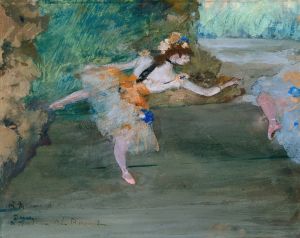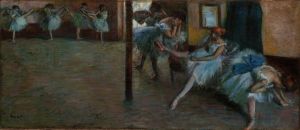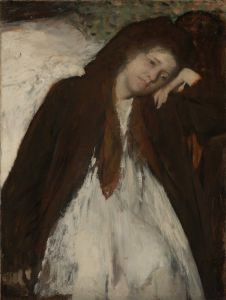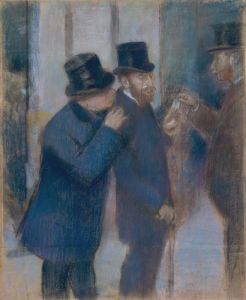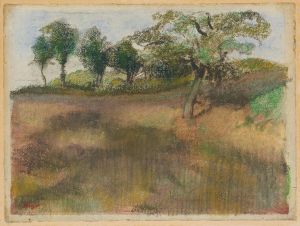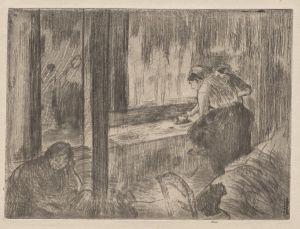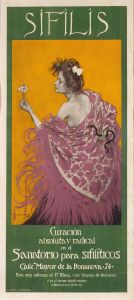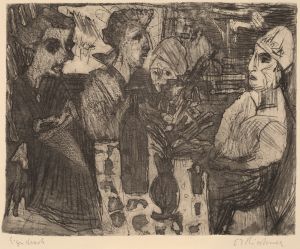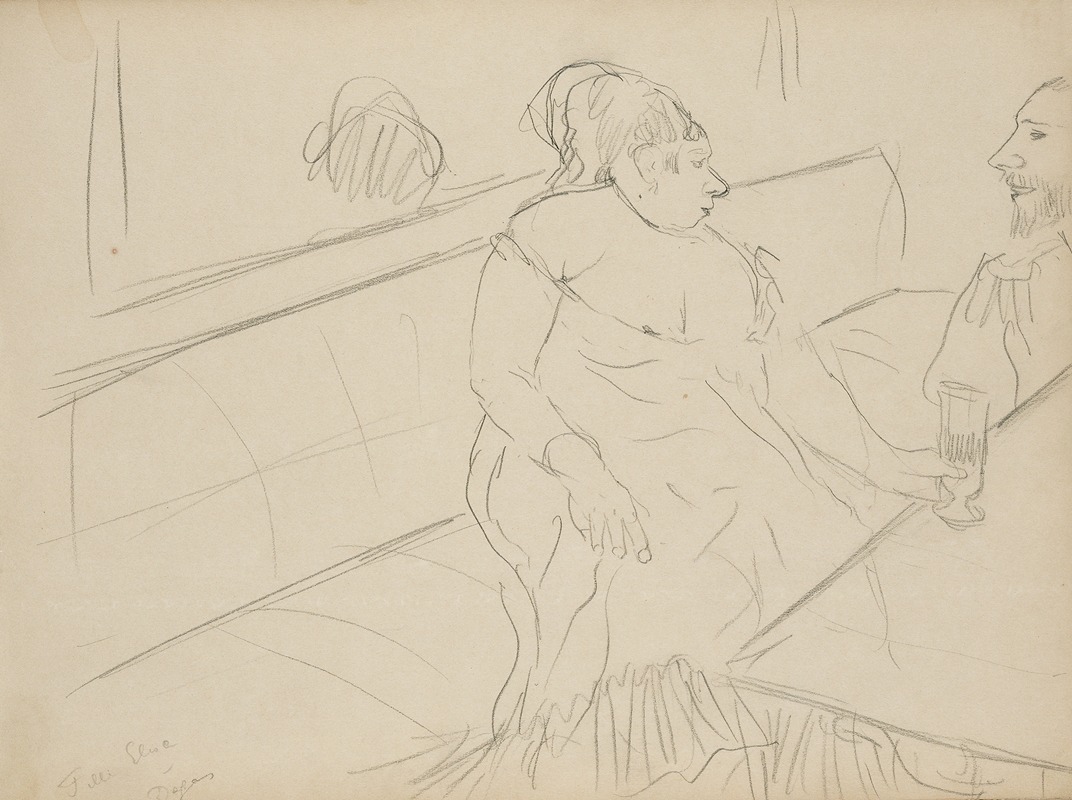
Brothel Scene
A hand-painted replica of Edgar Degas’s masterpiece Brothel Scene, meticulously crafted by professional artists to capture the true essence of the original. Each piece is created with museum-quality canvas and rare mineral pigments, carefully painted by experienced artists with delicate brushstrokes and rich, layered colors to perfectly recreate the texture of the original artwork. Unlike machine-printed reproductions, this hand-painted version brings the painting to life, infused with the artist’s emotions and skill in every stroke. Whether for personal collection or home decoration, it instantly elevates the artistic atmosphere of any space.
Edgar Degas, a prominent French artist associated with the Impressionist movement, is known for his mastery in capturing human figures and scenes of modern life. Among his extensive body of work, there exists a painting commonly referred to as Brothel Scene. However, this work is shrouded in ambiguity, as Degas did not officially title or publicly exhibit it during his lifetime. The painting is believed to have been created in the late 19th century, a period when Degas was exploring themes of human intimacy, voyeurism, and the complexities of social interactions.
The artwork depicts a group of women in an interior setting, often interpreted as a brothel. The composition is characterized by Degas' signature use of muted tones, dynamic brushwork, and an emphasis on the psychological tension between the figures. The women are portrayed in various poses, some appearing contemplative or indifferent, while others engage with one another. The scene avoids overt sensuality, instead focusing on the mundane and introspective aspects of the environment. This approach aligns with Degas' broader interest in portraying unidealized, candid moments of human life.
Degas' treatment of the subject matter reflects his interest in realism and his desire to challenge traditional artistic conventions. Rather than romanticizing or moralizing the setting, he presents it with a detached, observational quality. This perspective is consistent with his broader body of work, which often delves into the private, unseen aspects of 19th-century Parisian life, including scenes of laundresses, ballet dancers, and women at their toilette.
It is important to note that Degas' exploration of such themes was not unique among his contemporaries. Other artists of the time, such as Henri de Toulouse-Lautrec, also depicted similar subject matter, reflecting a broader cultural fascination with the underbelly of urban life during the Belle Époque. However, Degas' approach is distinct in its psychological depth and compositional innovation.
The provenance of Brothel Scene is not well-documented, and its current location is uncertain. As with many of Degas' works, it is possible that the painting remained in his possession until his death in 1917. Degas was known to be highly selective about what he chose to exhibit, and many of his works were discovered in his studio posthumously.
Due to the lack of concrete information about the painting's creation, exhibition history, and reception, interpretations of Brothel Scene remain speculative. Scholars continue to study Degas' oeuvre to better understand his intentions and the context in which this work was produced.






